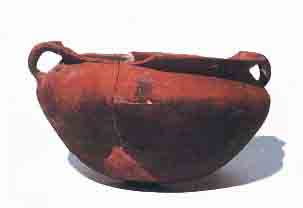Image Details

Courtesy Andrea M. Berlin
Pottery and politics. Feuds and revolts characterized the era preceding the arrival of the third—and final—group of settlers at Tel Anafa, in the first century C.E.: The Hasmonean and Seleucid kingdoms were riven from within; Judea became a client-state of Rome; Herod’s kingdom, divided among his three sons, expanded to include territory beyond the Jordan River. The first-century C.E. settlement at Tel Anafa was also marked by shifting alliances. Whereas the two earlier groups of settlers at Tel Anafa obtained their cookery from Hula Valley potters, all of the cooking pots and casseroles of the first-century C.E. settlers, including the one shown, hailed from Kfar Hananiah, in the Lower Galilee, whose pottery was noted for its durability and its ability to retain heat. Many of their large grain, oil and wine storage jars also were manufactured in Kfar Hananiah, as was the majority of Tel Anafa’s pottery. Though the first-century C.E. inhabitants did own pottery imported from southern Phoenicia, they greatly preferred Galilean goods over Phoenician ones, suggesting that they had little cultural attachment to the Mediterranean coast.
